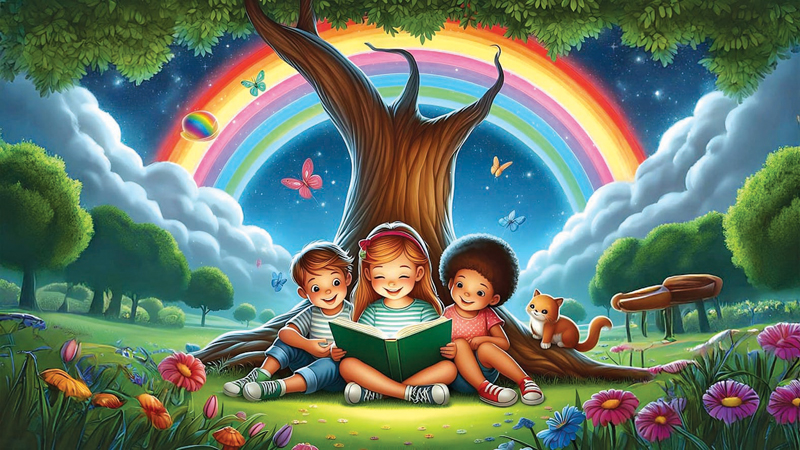Have you ever been outside just after a rainstorm and spotted a beautiful rainbow stretching across the sky? Rainbows have always fascinated people, from young children to adults. They are like magical bridges made of colours, appearing out of nowhere and filling us with wonder. But have you ever wondered how rainbows actually form?
How rainbows are made
 Rainbows occur when sunlight and raindrops work together in the sky. When the sun is shining while it's still raining, something amazing happens. Sunlight, which appears white to our eyes, is actually made up of all the colours of the rainbow: red, orange, yellow, green, blue, indigo, and violet.
Rainbows occur when sunlight and raindrops work together in the sky. When the sun is shining while it's still raining, something amazing happens. Sunlight, which appears white to our eyes, is actually made up of all the colours of the rainbow: red, orange, yellow, green, blue, indigo, and violet.
When sunlight hits a raindrop, it bends, or refracts, as it enters the water. This bending causes the light to split into all its different colours.
Next, the light reflects off the inside surface of the raindrop, almost like a tiny mirror. As the light exits the raindrop, it bends again. This double bending action causes the colours to spread out and form a circle of colours that we see as a rainbow. The order of colours always goes from red on the top to violet on the bottom.
Why we only see part of the rainbow
Most of the time, we only see a semi-circle or an arc because the ground gets in the way of seeing the whole circle. But if you are ever lucky enough to be in an airplane flying above the clouds, you might see a full circular rainbow.
Different kinds of rainbows
There isn’t just one type of rainbow! Sometimes, if you look closely, you might spot a second, fainter rainbow above the main one. This is called a double rainbow. A double rainbow occurs when the light reflects twice inside the raindrop before coming back out. In a double rainbow, the colours are reversed, with red on the bottom and violet on the top.
There are even more kinds of rainbows, like supernumerary rainbows, which are faint, extra rainbows that appear on the inner edge of the main rainbow. These happen because of complex light wave interactions within the raindrops, making them look like a series of pastel-coloured bands.
Chasing rainbows
While it might seem like you could walk over to a rainbow or even find its end, rainbows are actually an optical illusion. They don’t exist in a specific spot in the sky; their appearance depends on where you are standing and where the sun and raindrops are. This is why no two people see the same exact rainbow!
A beautiful gift from nature
Rainbows remind us of the wonders of nature and the amazing things that happen all around us every day. The next time you see a rainbow, take a moment to appreciate its beauty and think about the incredible journey of sunlight through raindrops that creates such a stunning sight. It’s like nature’s way of painting the sky with all the colours of the world.







